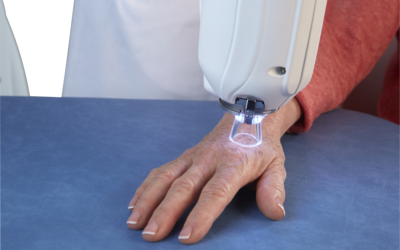[vc_row type=”in_container” full_screen_row_position=”middle” scene_position=”center” text_color=”dark” text_align=”left” overlay_strength=”0.3″ shape_divider_position=”bottom” bg_image_animation=”none”][vc_column column_padding=”no-extra-padding” column_padding_position=”all” background_color_opacity=”1″ background_hover_color_opacity=”1″ column_link_target=”_self” column_shadow=”none” column_border_radius=”none” width=”1/1″ tablet_width_inherit=”default” tablet_text_alignment=”default” phone_text_alignment=”default” column_border_width=”none” column_border_style=”solid” bg_image_animation=”none”][vc_column_text]As skin cancer rates increase worldwide, with a predominance of head and neck cancers of varying levels of advance (80%) due to significant sun exposure to the area, and with an aging population and extended life expectancy, standard treatment regimens can be seriously prohibitive. The vast majority of patients with NMSC are at low risk, and are typically treated with simple excision or Mohs surgery, however for patients unable to go through these treatment options, radiotherapy is the preferred treatment. Over time a series of radiotherapy treatment regimens have come to the forefront, however questions have been asked over the effectiveness of short term radiotherapy cycles.
In the paper “Radiotherapy regimes in patients with nonmelanoma head and neck skin cancers” Yusuf Dundar, et al studied retrospective data for 107 patients in the US between 2004 and 2014, with varied ranges of NMSC advancement and radiotherapy dose per fraction regimens. This data was then analysed for demographics, tumor characteristic, local control, regional control and survival outcomes in order to assess the effectiveness and outcomes of adjuvant radiotherapy regimens for NMSC on the head and neck, particularly in elderly patients.
Of the 90 patients with 140 disease sites, 76.6% were squamous cell carcinoma, 15.5% were basal cell carcinoma, and 7.7% were other histologies. The mean age at diagnosis was 72.1 years old. The most common location was preauricular (20.0%), followed by temple, scalp, cheek, and forehead. The overall local control and regional control rates were 88.8% and 88.8%, respectively by patients, and 92.8% and 86.4%, respectively by treatment sites. Age, primary tumor location, T classification, N classification, overall stage, perineural invasion, comorbid disease, skull base invasion, and radiotherapy subgroup were significantly associated with disease-free and overall survival (P < 0.05). Local control and regional control were not significantly different among the radiotherapy dose subgroups. The mean survival was longer in patients treated with 240-250 cGy/fraction (50.3 months). There was no significant difference in radiotherapy toxicity between the subgroups.
It was concluded that short term radiotherapy regimens for patients with locally or regionally advanced head and neck NMSC is both feasible and effective, especially in elderly patients and those that cannot tolerate the length of standard treatment regimens.[/vc_column_text][/vc_column][/vc_row]






